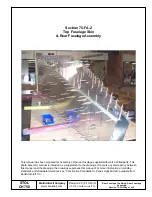Reviews:
No comments
Related manuals for LSA

STOL CH750
Brand: Zenith Pages: 9

Backup RS Series
Brand: U-Turn Pages: 30

Astral 3
Brand: Swing Pages: 16

Muse 4
Brand: MAC PARA Pages: 32

ATIS L
Brand: SKY PARAGLIDERS Pages: 40

Zodiac CH650B S-LSA
Brand: Zenith Pages: 21

Diamond Star DA40 TDI
Brand: Diamond Pages: 20

S2R-R1340
Brand: Thrush Aircraft Pages: 227

S2RHG-T65 TURBO THRUSH
Brand: Thrush Aircraft Pages: 272

X-ALPS4
Brand: Skywalk Pages: 10

XF 15
Brand: JOJO WINGS Pages: 33

PROFI TL
Brand: Aeros Pages: 43

Still TL
Brand: Aeros Pages: 23

Stealth 13 KPL 2
Brand: Aeros Pages: 34

ANT
Brand: Aeros Pages: 34

Fox-13
Brand: Aeros Pages: 40

COMBAT-09
Brand: Aeros Pages: 48

TARGET 13
Brand: Aeros Pages: 52

















